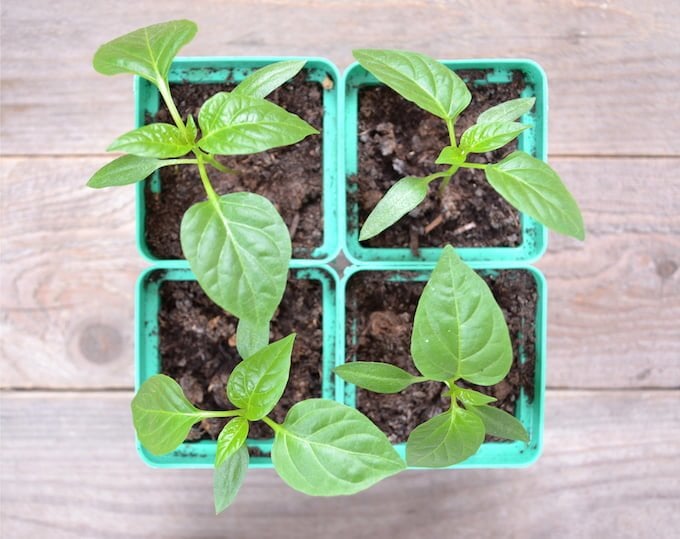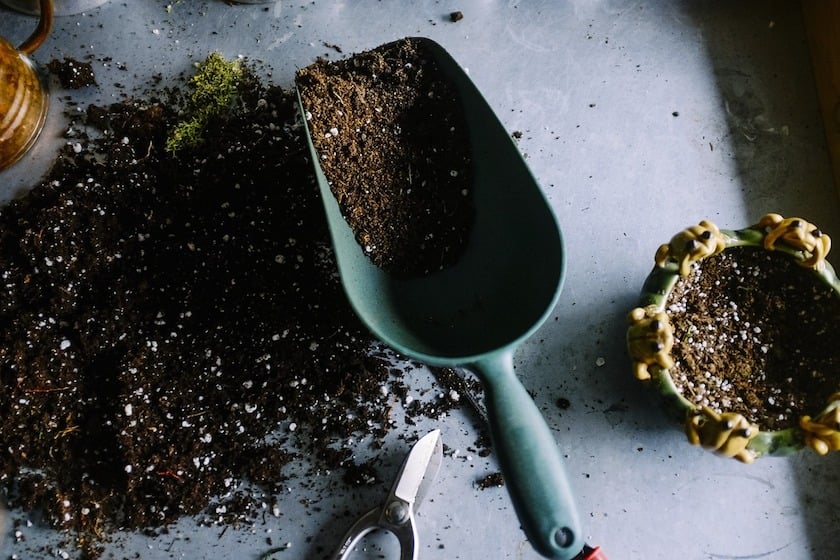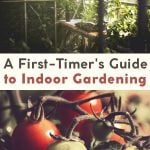Everything You Need to Know to Make an Indoor Vegetable Garden
So, you want to grow an indoor vegetable garden.
It’s easier than ever thanks to DIY toolbox divas and Pinterest-happy bloggers. However, building a cutesy little indoor garden box isn’t half as complicated as getting plants to thrive in it (or rather, to survive our gardening ordeal).

But there’s good news.
Growing a garden indoors takes some basic knowledge of a plant’s needs. Once you know what they need, you know how to take care of them.
A year-round outdoor garden is not an option for everyone, especially for those who live in areas with long cold winters or no access to garden space. Luckily, there are many options for indoor gardening!
GET THE KIDS INVOLVED WITH YOUR INDOOR GARDEN
There are many benefits to involving your children in growing food, and a lot of families have already picked up the trowel together. When kids garden, they tend to develop a deeper connection to the natural world and are more open to eating fruits and vegetables.
When you grow your own food, you know it’s organic (no exposing your kids to chemical nasties) and you can literally live farm-to-table.
During the winter, families spend a lot more time inside and kids can get antsy without a project. Indoor gardening is a great way to engage their imaginations. You don’t need a lot of fancy equipment as long as you keep your plants warm and well lit. Here are some tips to get growing!
CHOOSE AN INDOOR GARDENING AREA
- Find an area by a south or east facing window in your home (south is best). This is where the sun’s rays are most likely to reach your plants, even in the winter.
- Try to choose a spot where there isn’t a lot of activity, to protect plants from being knocked over.
- Use an organic, sterilized potting soil rather than bringing soil in from your yard. This way you will only be growing what you plant. If you can get great soil for free, like from a neighbor with a backyard, lucky you! You’ll just have to weed out whatever bad there is in the soil such as stones and make it breathable for the plants.
- Any containers will do – get creative! Use what you have on hand or choose indoor pots you find beautiful. Just make sure that they have sufficient drainage. Protect your household surfaces from water damage by putting drop cloths or trays underneath your plants.
SET THE TEMPERATURE FOR YOUR INDOOR VEGGIE GARDEN
Temperature initiates different growth phases like flowering, fruiting, and bolting, and not all plants have the same temperature needs.
While hardy crops like kale and peas can take cooler temps, fruit-bearing crops like peppers and basil are much more particular. Most varieties demand a daytime temp of 70-85 F, and a nightly average of 55-70 F. Obviously, growing heat-loving crops will either take some fancy DIY work, or some very green thumbs. If neither are your present forte, then build your garden with easy herbs or simple greens. The average herb and leafy green will thrive at 65-70° F during the day and 55°F at night.
CONTROL THE HUMIDITY
You know how lips and hands dry up in the winter? That’s because the drier or colder air is, the lower its capacity for carrying water molecules. The moisture present in air is referred to as relative humidity, and it’s estimated that the average home has a relative humidity level of 10-20%.
Then there are plants, with minimum humidity needs anywhere between 45-90%. If that’s not crazy enough, the humidity needs change with different growth phases. Clearly, greenhouse gardeners are really stay-at-home plant parents!
But as needy as plants are, you have options outside of a bathroom vertical garden. If your indoor garden is confined to it’s own special space, you can add a tray of water to your indoor garden. Cover the bottom of the tray with pebbles or marbles, fill it up with water, and then put plants on top and around the tray.
As the water evaporates from the tray, it will infuse the surrounding air with moisture. Of course, you could always use a humidifier to do the same thing, but that sweet little humidifying tray takes zero in electricity and online shopping. Plus, it doubles as a secondary water dish for thirsty kitties (better the tray than your glass of water).
JUST ADD WATER
We all know that water is essential, but indoor plants get pretty particular with their watering needs. Indoor plants don’t have the deep drainage systems like their outdoor cousins — making overwatering a death sentence.
They also don’t have the deep roots of their garden counterparts, so that potted plant will turn into a potted desert as fast as my toilet-training toddler goes through a pack of underwear. However, if you happen to enjoy fine wines — or the elegant $3 bottles from Trader Joe’s – you can use your favorite bottle to replace the watering can. Just add marbles and water to a wine bottle, drill a hole through the cork, and you’ve got a DIY hack for moderated watering.
CONTROL THE AIRFLOW IN YOUR INDOOR GARDEN
Fresh air is a big deal for plants. Carbon dioxide is to plants what air is to humans – obviously important – but it seems to double as a sort-of airborne fertilizer. Various studies show that high CO2 levels can increase water efficiency and plant growth. Which is pretty amazing, because it means that our leafy little air filters clean our air, and they’re all the healthier for it.
Another huge plus to airflow is that it will keep rot and bacterial diseases at bay. All important stuff. So, keep new air coming and old air going for healthy, happy plants.
MAKE SURE YOU HAVE THE RIGHT AMOUNT OF LIGHT
A plant’s lighting needs are defined as either full sun, partial sun, partial shade, or shade. Fruiting plants like tomatoes and beans, and root crops like beets and carrots fit the “full sun” category — meaning they’ll need a minimum of six hours of direct sunlight to produce a timely and worthwhile crop. Leafy greens and herbs can generally get by with indirect sunlight and less than six hours of light, but some will need more light than others.

If you have a southern-facing window, make the most of it with a vertical wall garden, hanging planters, or upside-down plants. Should your windows face every direction but South, you can boost sunlight using reflected sunlight with aluminum, mylar, sheet metal, or white materials.
THE BEST VEGETABLES TO GROW INDOORS
Most herbs will grow easily indoors, but when it comes to vegetables, some are better suited than others.
- Tomatoes
- Arugula
- Bell peppers
- Mushrooms
- Beans
- Kale
- Carrots
- Sprouts
- Radishes
- Spinach
- Lettuce
- Potatoes
- Alliums – chives and scallions
- Herbs of all kinds, from cilantro to rosemary
- Edible flowers such as viola and chamomile
- Dwarf fruit trees (keep them outside in the summer and bring them indoors in the winter)
BUY YOUR SEEDS OR TRANSPLANTS
Selecting seeds and transplants of good quality is crucial to successfully start your home garden. Buy seeds and transplants only from credible dealers. If you are buying seeds, jot down information such as germination and vulnerability to diseases. Choose seeds that are stored in good conditions.
As for transplants, you’ll want to buy them fresh and healthy. This does not necessarily mean that you should pick the tallest or the biggest among the batch. Go for plants with vibrant colors.
PREPARE YOUR GARDENING SUPPLIES
Your checklist will vary depending on the plants you’ve selected. At the minimum, you should have gloves, a watering can, a hand spade, scissors or pruners, and containers. Customize as needed.
You don’t have to buy all of these, as you can recycle existing items or materials. Instead of purchasing a brand-new spade, you can use an old spoon. You can also forgo the usual pots in favor of wine bottles, cocktail glasses, and other items that you can upcycle as you pursue container gardening.
That sums up the basics of the basics, so you’re off to a great start. If you really want to dive into this indoor gardening thing, read up on how the need above change from germinating seedlings, to flowering plants, and to fruitful producers. You can also read up on the symptoms and causes of common plant diseases.
Happy growing!

